Sidebar
This is an old revision of the document!
Table of Contents
Entry Rules
EA Studio uses technical indicators to determine when to open a position. Every indicator in the application has logical rules. These rules can be evaluated to either true or false.
For example: if you use a Momentum indicator with a logical rule “Momentum rises” that means that when the Momentum value becomes higher than the previous one the indicator will allow entering a long position.
In EA Studio all Entry Rules have to be met before a strategy can open a position. This means that if in the above example there is another indicator that does not “agree” to open a long position EA Studio will not open a position.
You have to set only the rules for the long positions. EA Studio will set the rules to enter a short position automatically. It will do so by mirroring the long rules. You can see the short entry rules by clicking the Short entry tab above the Entry Rule list.
Examples
No entry indicators
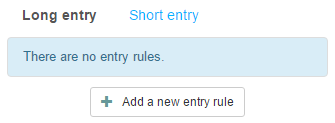
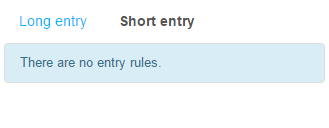
In this case EA Studio will not open a position because there are no rules to determine the direction of the entry.
One entry rule
You can add Entry Rules by using the + Add a new entry rule button. You can't have more than four Entry Rules. The button + Add a new entry rule button will become inactive when this limit is reached. When you click the button, the program will open an Entry Rule Indicator panel at the left side of the Editor. You can choose an indicator there and set its Logic and parameters.
All of the indicators express a logical condition that can either be fulfilled or not fulfilled. When creating a strategy, you should cover the Long trading case and the program will assume the reverse rules for the Short trades. In this sense the strategy uses symmetrical conditions for long and short positions. The general case is that the condition is fulfilled for a short position but not for a long one or vice versa. In some cases, the condition can be fulfilled in both directions of trade at the same time (when using ADX for example).
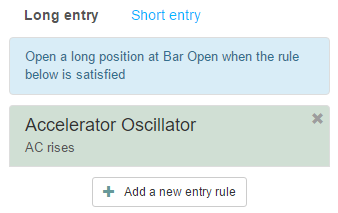
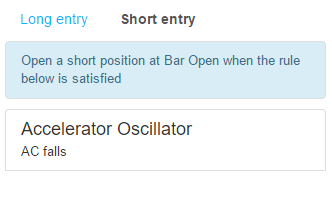
The strategy will trade Long when “AC rises” and will trade Short when “AC falls”. You can confirm that on the Indicator chart at the Report page.
Two or more entry rules
When a strategy has more than one indicator, it will trade only if all indicators give permission for entry in the particular direction.
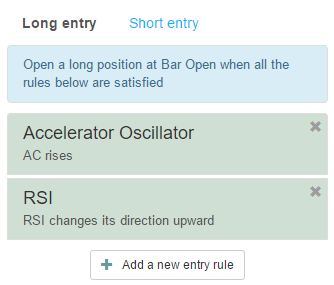

In that example we have two indicators. Following the strategy logic, the program will:
- trades Long - when: “AC rises” and “RSI changes its direction upward”. If one of the rules is not satisfied, the strategy will not trade.
- trades Short - when: “AC falls” and “RSI changes its direction downwards”. If one of the rules is not satisfied, the strategy will not trade.
Ambiguous rules
There are cases when the strategy indicators produce equal signals in both directions. Let's see the following example:
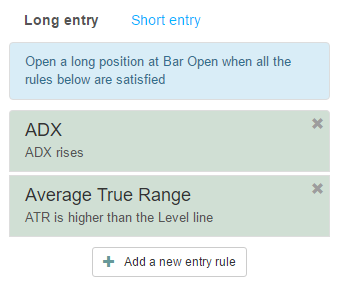
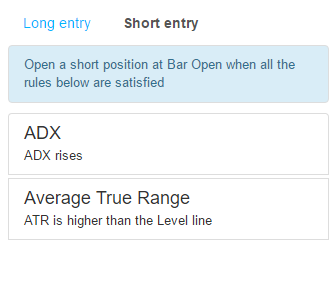
That strategy will not trade because its rules give simultaneously permissions for both - Long and Short entries. If you set this example in the app and switch to the Short rules, you will see they will be equal to the Long rules. Since the conditions are ambiguous, the strategy acts in the safe way and prevents all entries.